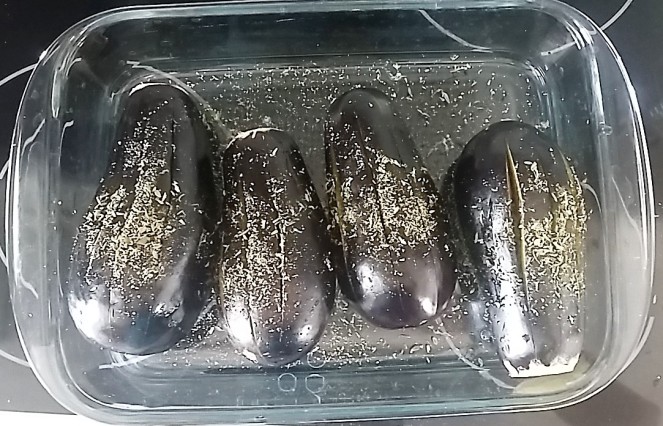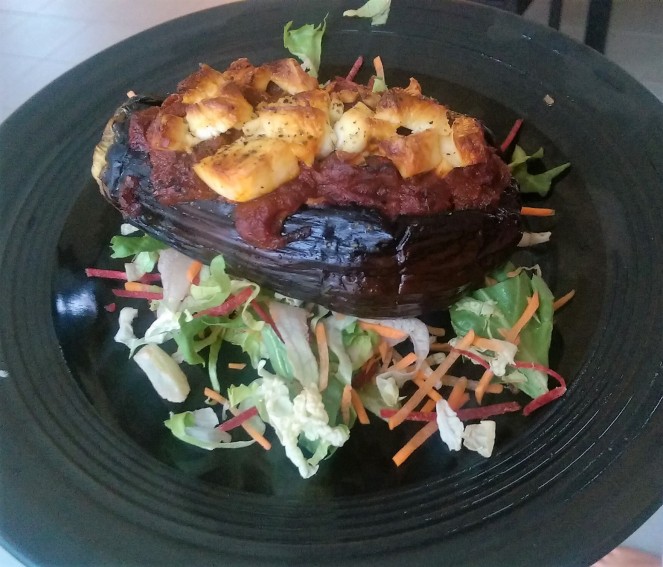If you are Greek or from the Balkans there is a high possibility you know this dish already. Nevertheless, I find it an interesting topic to include in my newest category: cooking.
I am Greek in origin, but by now I have been living almost 10 years abroad. One of the things that most Greeks abroad miss is the weather (oh well!) and the food, but the latter can be solved if you cook at home. Upon request from my husband, last week I decided to cook Imam bayildi.
Let’s start from the name. It is really turkish and it means that the imam (their priest) fainted or something like that. The story goes that an imam liked the dish so much, that he ate really a lot and as a result he fainted.
Concerning the dish, the main ingredient of Imam bayildi is aubergines. In short it consists of aubergines with tomato sauce and onions. It is a dish of our cuisine in the category we call “ladera”, which means oily. This category includes dishes that are based on vegetables and don’t have any meat.
In Greece we use the different types of aubergines for different dishes. For Imam bayildi we use the long light purple ones and not the short and fat deep purple ones that are common in western Europe. Unfortunately, for my dish, I couldn’t find the correct aubergines, so I had to make do with the second type.
Imam bayildi is a dish we used to have at home quite often, as my dad loves aubergines. I remember my mother cooking this dish: in a big pot she was first letting the onions saute and then she added the tomato sauce and the aubergines. She was letting it cook for quite some time, till the aubergines almost dissolve in the sauce. But since my mom died a few years ago, I couldn’t really call her to verify the recipe. Instead, I checked Akis Petretzikis. He is a young greek chef, whose recipes I have tried several times and they are nice! He bases his cooking in the greek tradition, but with a bit of a modern touch. As a result, he cooks his Imam bayildi in the oven and not in the pot, thus diminishing the amount of oil the vegetables absorb. Perfect for my husband and me!
As I mentioned already, I couldn’t find the correct aubergines, but I tried to choose four “common” aubergines that were rather long than short. I washed them and removed the green non-edible part and then followed Akis’ recipe. I made three cuts in each one of them and opened the cuttings, and then I spiced them with salt, pepper, thyme and added a bit of oil.

In the meanwhile the oven should be preheated to 180 C. The recipe advises to cook the aubergines in the oven like this for 40 min. Since I had the wrong type of vegetable and mine were a bit thicker, I left them cook for at least 45 min.
While the aubergines were in the oven, I prepared the filling: one onion and one clove of garlic per aubergine, cut in slices. In a pan I added a bit of olive oil and let the onions and garlic saute in high temperature. I added the seasoning that the recipe suggests: one tablespoon of sugar, a lot of cumin (I absolutely adore this spice), salt and pepper. Slowly slowly, the onions start to caramelise and get a really nice colour.

Once they looked ready, I added the sauce parts: one tablespoon tomato paste and then a tin of chopped tomatoes. I stopped the cooking when most of the liquid had evaporated.

In the meanwhile the aubergines finished cooking for 45 min. I tried them and they felt soft enough, so I started the assembly. I pressed the cuts down with a spoon and then added the filling in the dents created and on top sprinkled a bit (or a lot really) of feta cheese. Of course it can be eaten without the feta cheese, but according to my experience ladera without feta are boring! Then the pyrex went back to the oven for another 15 to 20 minutes.

Akis suggests to serve the aubergines on rocket, but we chose to serve it with salad. My husband said he loves me a bit more after eating dinner 🙂

